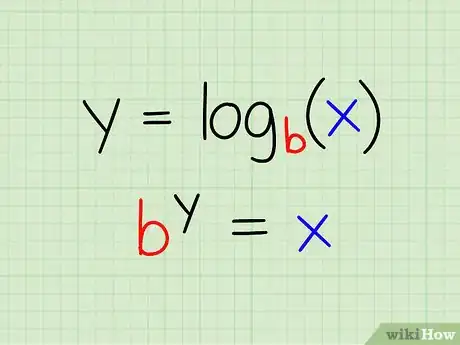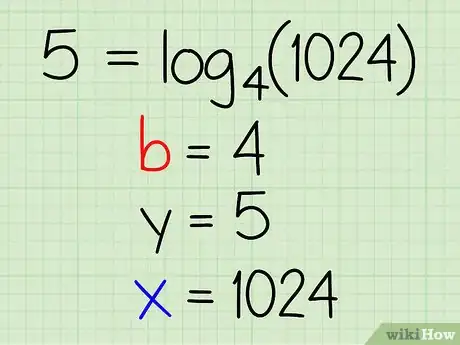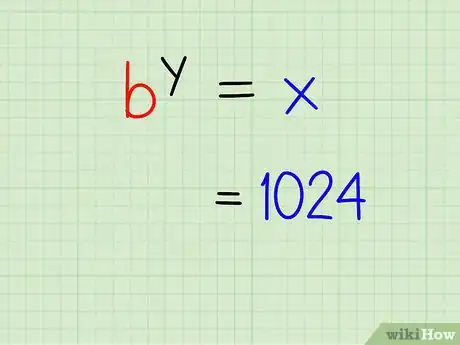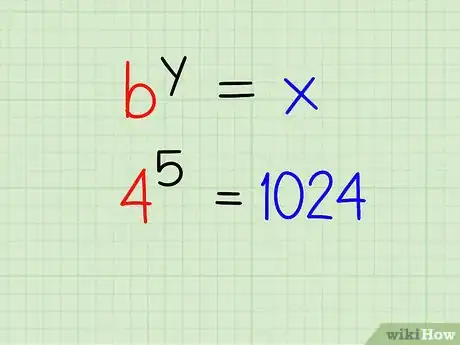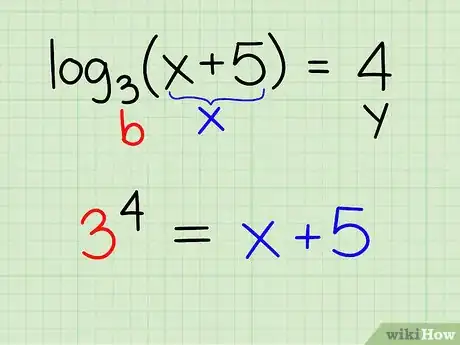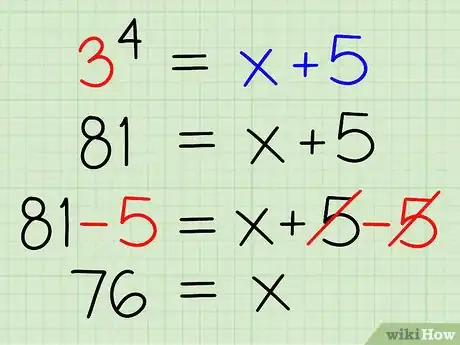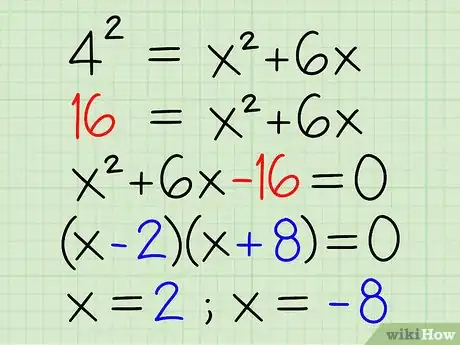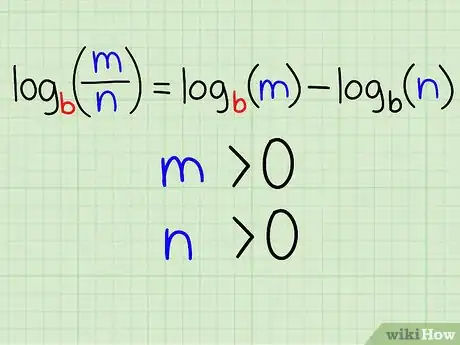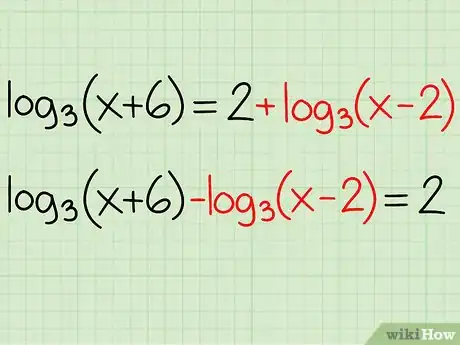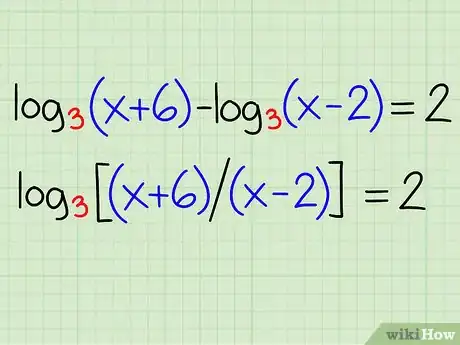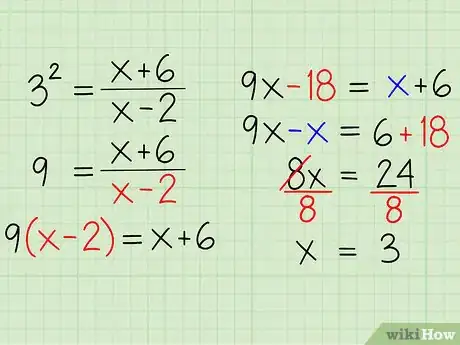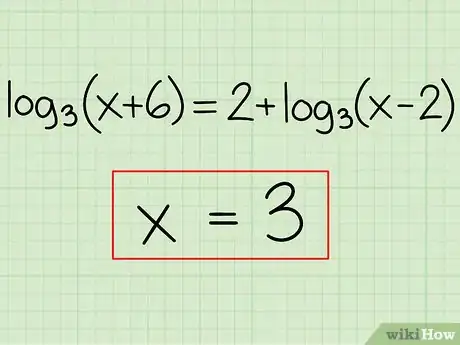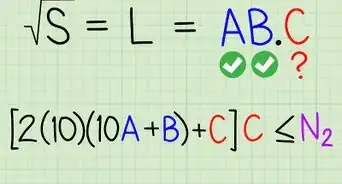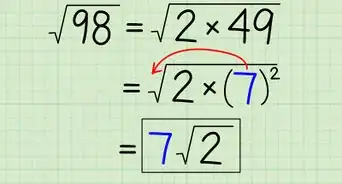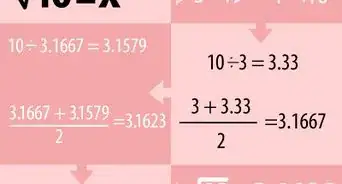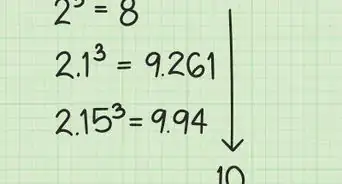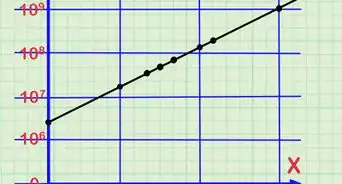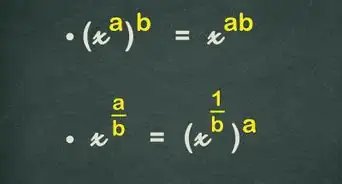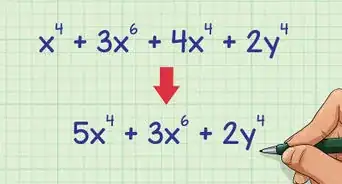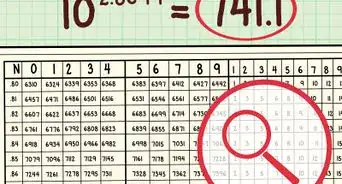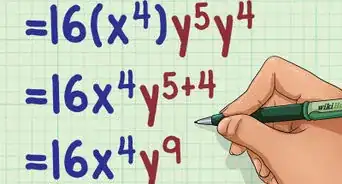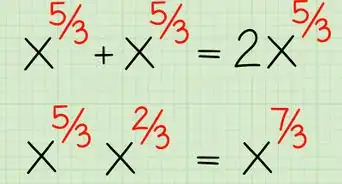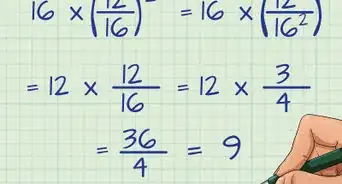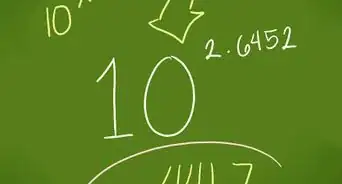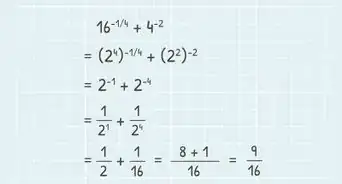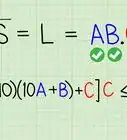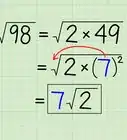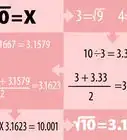wikiHow is a “wiki,” similar to Wikipedia, which means that many of our articles are co-written by multiple authors. To create this article, volunteer authors worked to edit and improve it over time.
This article has been viewed 188,099 times.
Learn more...
Logarithms might be intimidating, but solving a logarithm is much simpler once you realize that logarithms are just another way to write out exponential equations. Once you rewrite the logarithm into a more familiar form, you should be able to solve it as you would solve any standard exponential equation.
Steps
Before You Begin: Learn to Express a Logarithmic Equation Exponentially[1] [2]
-
1Know the logarithm definition. Before you can solve logarithms, you need to understand that a logarithm is essentially another way to write an exponential equation. It's precise definition is as follows:
-
y = logb (x)
- If and only if: by = x
- Note that b is the base of the logarithm. It must also be true that:
- b > 0
- b does not equal 1
- In the same equation, y is the exponent and x is the exponential expression that the logarithm is set equal to.
-
y = logb (x)
-
2Look at the equation. When looking at the problem equation, identify the base (b), exponent (y), and exponential expression (x).
-
Example: 5 = log4(1024)
- b = 4
- y = 5
- x = 1024
Advertisement -
Example: 5 = log4(1024)
-
3Move the exponential expression to one side of the equation. Set the value of your exponential expression, x, to one side of the equal sign.
- Example: 1024 = ?
-
4Apply the exponent to the base. The value of your base, b, needs to be multiplied by itself by the amount of times indicated by your exponent, y.
-
Example: 4 * 4 * 4 * 4 * 4 = ?
- This could also be written as: 45
-
Example: 4 * 4 * 4 * 4 * 4 = ?
-
5Rewrite your final answer. You should be able to rewrite the logarithm as an exponential expression now. Verify that your answer is correct by making sure that both sides of the equation are equal.
- Example: 45 = 1024
Method One: Solve for X
-
1Isolate the logarithm. Use inverse operations to move any part of the equation that is not part of the logarithm to the opposite side of the equation.
-
Example: log3(x + 5) + 6 = 10
- log3(x + 5) + 6 - 6 = 10 - 6
- log3(x + 5) = 4
-
Example: log3(x + 5) + 6 = 10
-
2Rewrite the equation in exponential form. Using what you now know about the relationship between logarithms and exponential equations, break the logarithm apart and rewrite the equation in a simpler, solvable exponential form.
-
Example:log3(x + 5) = 4
- Comparing this equation to the definition [y = logb (x)], you can conclude that: y = 4; b = 3; x = x + 5
- Rewrite the equation so that: by = x
- 34 = x + 5
-
Example:log3(x + 5) = 4
-
3Solve for x. With the problem simplified into a basic exponential equation, you should be able to solve it as you would solve any exponential equation.
-
Example: 34 = x + 5
- 3 * 3 * 3 * 3 = x + 5
- 81 = x + 5
- 81 - 5 = x + 5 - 5
- 76 = x
-
Example: 34 = x + 5
-
4Write your final answer. The answer you got when solving for x is the solution to your original logarithm.
- Example: x = 76
-
1Know the product rule. The first property of logarithms, known as the "product rule," states that the logarithm of a multiplied product equals the sum of the logarithms of both factors. Written in equation form:
- logb(m * n) = logb(m) + logb(n)
- Also note that the following must be true:
- m > 0
- n > 0
-
2Isolate the logarithm to one side of the equation. Use inverse operations to shift the parts of the equation around so that all logarithms are on one side of the equation while all other elements are on the opposite side.
-
Example: log4(x + 6) = 2 - log4(x)
- log4(x + 6) + log4(x) = 2 - log4(x) + log4(x)
- log4(x + 6) + log4(x) = 2
-
Example: log4(x + 6) = 2 - log4(x)
-
3Apply the product rule. If there are two logarithms added together in the equation, you can use the product rule to combine the two logarithms into one.
-
Example: log4(x + 6) + log4(x) = 2
- log4[(x + 6) * x] = 2
- log4(x2 + 6x) = 2
-
Example: log4(x + 6) + log4(x) = 2
-
4Rewrite the equation in exponential form. Remember that a logarithm is just another way to write an exponential equation. Use the logarithm definition to rewrite the equation in its solvable form.
-
Example: log4(x2 + 6x) = 2
- Comparing this equation to the definition [y = logb (x)], you can conclude that: y = 2; b = 4 ; x = x2 + 6x
- Rewrite the equation so that: by = x
- 42 = x2 + 6x
-
Example: log4(x2 + 6x) = 2
-
5Solve for x. Now that the equation has become a standard exponential equation, use your knowledge of exponential equations to solve for x as you usually would.
-
Example: 42 = x2 + 6x
- 4 * 4 = x2 + 6x
- 16 = x2 + 6x
- 16 - 16 = x2 + 6x - 16
- 0 = x2 + 6x - 16
- 0 = (x - 2) * (x + 8)
- x = 2; x = -8
-
Example: 42 = x2 + 6x
-
6Write your answer. At this point, you should have the solution for the equation. Write it down in the space provided for your answer.
- Example: x = 2
- Note that you cannot have a negative solution for a logarithm, so you can discard x - 8 as a solution.
Method Three: Solve for X Using the Logarithmic Quotient Rule[5]
-
1Know the quotient rule. According to the second property of logarithms, known as the "quotient rule," the logarithm of a quotient can be rewritten by subtracting the logarithm of the denominator from the logarithm of the numerator. Written as an equation:
- logb(m / n) = logb(m) - logb(n)
- Also note that the following must be true:
- m > 0
- n > 0
-
2Isolate the logarithm to one side of the equation. Before you can solve the logarithm, you need to shift all logs in the equation to one side of the equal sign. The other parts of the equation should all be shifted to the opposite side of the equation. Use inverse operations to accomplish this.
-
Example: log3(x + 6) = 2 + log3(x - 2)
- log3(x + 6) - log3(x - 2) = 2 + log3(x - 2) - log3(x - 2)
- log3(x + 6) - log3(x - 2) = 2
-
Example: log3(x + 6) = 2 + log3(x - 2)
-
3Apply the quotient rule. If there are two logarithms in the equation and one must be subtracted by the other, you can and should use the quotient rule to combine the two logarithms into one.
-
Example: log3(x + 6) - log3(x - 2) = 2
- log3[(x + 6) / (x - 2)] = 2
-
Example: log3(x + 6) - log3(x - 2) = 2
-
4Rewrite the equation in exponential form. Now that there is only one logarithm in the equation, use the logarithms definition to rewrite the equation in exponential form, thereby removing the log.
-
Example: log3[(x + 6) / (x - 2)] = 2
- Comparing this equation to the definition [y = logb (x)], you can conclude that: y = 2; b = 3; x = (x + 6) / (x - 2)
- Rewrite the equation so that: by = x
- 32 = (x + 6) / (x - 2)
-
Example: log3[(x + 6) / (x - 2)] = 2
-
5Solve for x. With the equation now in exponential form, you should be able to solve for x as you usually would.
-
Example: 32 = (x + 6) / (x - 2)
- 3 * 3 = (x + 6) / (x - 2)
- 9 = (x + 6) / (x - 2)
- 9 * (x - 2) = [(x + 6) / (x - 2)] * (x - 2)
- 9x - 18 = x + 6
- 9x - x - 18 + 18 = x - x + 6 + 18
- 8x = 24
- 8x / 8 = 24 / 8
- x = 3
-
Example: 32 = (x + 6) / (x - 2)
-
6Write your final answer. Go back and double-check your steps. Once you feel certain that you have the correct solution, write it down.
- Example: x = 3
Community Q&A
-
QuestionWhy do we consider positive answers only?
 Community AnswerLogarithmic graphs have asymptotes at x=0, therefore any negative answers cannot exist.
Community AnswerLogarithmic graphs have asymptotes at x=0, therefore any negative answers cannot exist. -
QuestionHow do I find the antilog of 12.18?
 LinnieTop AnswererUnderstand that the antilog of 12.18 is a common antilogarithm question, which means the assumed subscript is 10. To solve this problem, take 10 to the power of 12.18. This gives you an approximate value of 1,513,561,248,436.21.
LinnieTop AnswererUnderstand that the antilog of 12.18 is a common antilogarithm question, which means the assumed subscript is 10. To solve this problem, take 10 to the power of 12.18. This gives you an approximate value of 1,513,561,248,436.21. -
QuestionHow do you do 4^x+10 = 10?
 Community Answer4^x + 10 = 10. Subtract 10 from both sides. 4^x = 0. Rewrite according to the definition of a logarithm. log4(0) = x. Use the change of base formula to calculate log4(0). log(0)/log(4) = x log(0) is undefined, making x undefined as well.
Community Answer4^x + 10 = 10. Subtract 10 from both sides. 4^x = 0. Rewrite according to the definition of a logarithm. log4(0) = x. Use the change of base formula to calculate log4(0). log(0)/log(4) = x log(0) is undefined, making x undefined as well.
References
- ↑ https://www.wtamu.edu/academic/anns/mps/math/mathlab/col_algebra/col_alg_tut43_logfun.htm#logdef
- ↑ https://www.mathsisfun.com/algebra/logarithms.html
- ↑ https://www.wtamu.edu/academic/anns/mps/math/mathlab/col_algebra/col_alg_tut46_logeq.htm
- ↑ https://www.youtube.com/watch?v=fnhFneOz6n8
- ↑ https://www.wtamu.edu/academic/anns/mps/math/mathlab/col_algebra/col_alg_tut44_logprop.htm
About This Article
To solve a logarithm, start by identifying the base, which is "b" in the equation, the exponent, which is "y," and the exponential expression, which is "x." Then, move the exponential expression to one side of the equation, and apply the exponent to the base by multiplying the base by itself the number of times indicated in the exponent. Finally, rewrite your final answer as an exponential expression. To learn how to solve for "x" in a logarithm, scroll down!
